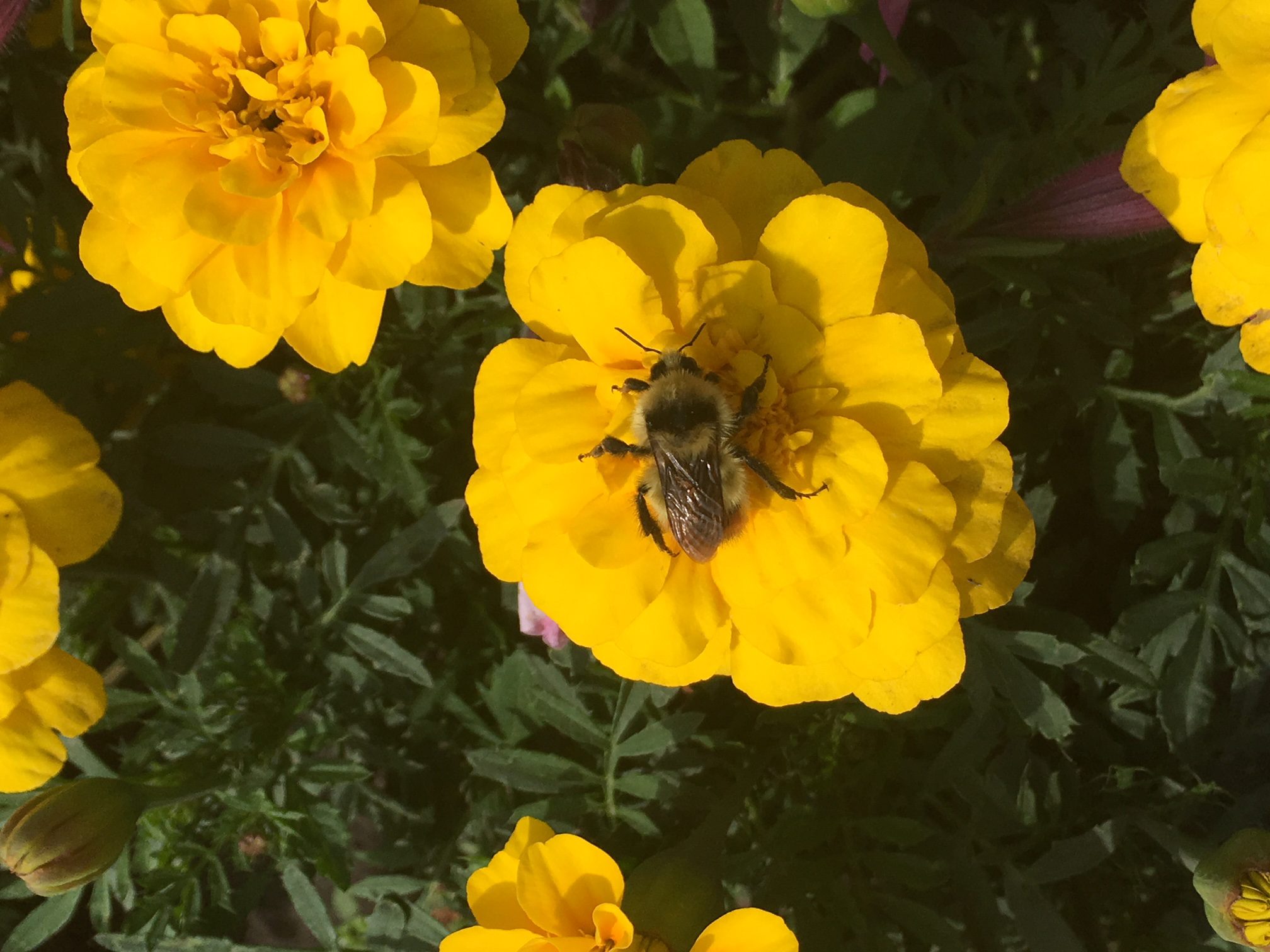Citizen Science and Survey123
Last year, I had the privilege of attending the Spatial Knowledge and Information (SKI) conference in Banff with my research team (Figure 1). It was my first time presenting at an academic conference, and overall a splendid experience. We went cross-country skiing and sight-seeing in the mornings and listened to some interesting presentations founded in GIS in the evenings. My conference paper was a survey of web-based crowdsourcing tools and their usability for citizen science.
Figure 1: Dr. Victoria Fast (middle) and her GIS research team at the 2019 SKI Conference in Banff.
Citizen science promotes the inclusion of the public in scientific inquiries and can be far more complex than traditional scientific endeavors (Hecker et al., 2018; Bonter & Cooper, 2012). Many citizen science programs rely on individuals from around the world to produce location-based data, such as eBird and Bumble Bee Watch (Figure 2), allowing researchers to widen the scope of their projects. However, citizen science requires specific crowdsourcing software to facilitate this process. Additionally, it is unrealistic to assume that the developer of a citizen science project has the financial backing and technological expertise to build their own platform. Therefore, web-based participatory mapping application platforms are strong alternatives; many of them support the collection, management, analysis and visualization of crowdsourced data.
 Figure 2: A bee sighting I submitted to Bumble Bee Watch in 2018. Bumble Bee Watch tracks and studies the distribution of bumble bee species around the world. The project relies on contributions from many different citizen scientists!
Figure 2: A bee sighting I submitted to Bumble Bee Watch in 2018. Bumble Bee Watch tracks and studies the distribution of bumble bee species around the world. The project relies on contributions from many different citizen scientists!
One of the platforms I investigated in my paper was Survey123, an Esri product that is fully integrated with ArcGIS Online. A researcher can develop customizable data collection surveys to be shared with the public. Once collected, the data is available for use in ArcGIS Online. I explored Survey123 (and the other platforms) by developing a mock citizen science project. Since citizen science has been utilized by birders for over a century (Silvertown, 2009), I felt that creating a fictional ornithology project would be a fitting way to streamline platform comparisons and ensure a consistent and impartial evaluation. I created a survey using Survey123’s builder, then manually submitted each entry from the ornithology dataset (bird sightings) using different platforms (android devices, apple devices, computers). However, I did not limit the comparisons to the mock ornithology project; all of the functionality from Survey123 and the other platforms was fully explored.
The results of my study concluded that Survey123 facilitates the citizen science data collection process by offering the most developed data analysis and visualization options, compared to its competitors. For commercial projects, there is a modest cost associated with the use of Survey123, as it requires an ArcGIS Online organization. However, it is available for academic use by students at schools with ArcGIS Online accounts (e.g., the University of Calgary). There are also low-cost and free options available for individuals to use Survey123, provided that the project is not a commercial endeavor. The ArcGIS for Personal Use program ($150 CAD/year) or an ArcGIS Developers account (Free) both enable the creation of Survey123 projects.
If anyone is looking to start a citizen science research project (or even a project relying on crowdsourced data), I strongly recommend Survey123. Recently, some colleagues of mine integrated Survey123 into their 2020 App Challenge submission, creating an online form that allows citizens to report traffic collisions. With the 21st century smartphone boom, the possibilities for citizen science have never been greater; and with platforms such as Survey123, it has never been easier to promote and operate these projects.
The full review and comparison can be found here
References
Bonter, D.N., & Cooper, C.B. (2012). Data validation in citizen science: a case study from Project FeederWatch. Frontiers in Ecology and the Environment, 10(6), 305-307.
Hecker, S., Haklay, M., Bowser, A., Makuch, Z., Vogel, J., & Bonn, A. (2018). Innovation in open science, society and policy – setting the agenda for citizen science. In Hecker, S., Haklay, M., Bowser, A., Makuch, Z., Vogel, J., & Bonn, A. (Eds.) Citizen Science: Innovation in Open Science, Society and Policy, (pp. 1- 23). London: UCL Press.
Silvertown, J. (2009). A new dawn for citizen science. Trends in ecology & evolution, 24(9), 467-471. doi: https://doi.org/10.1016/j.tree.2009.03.017

